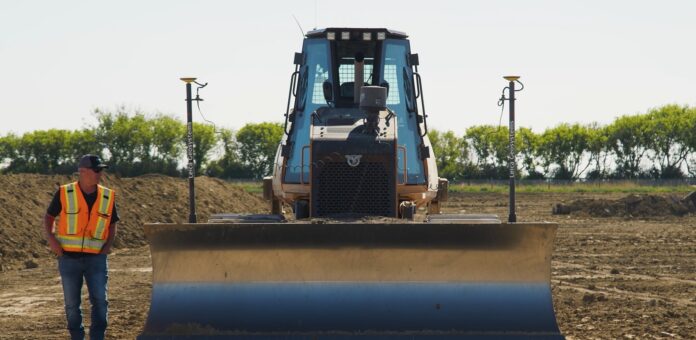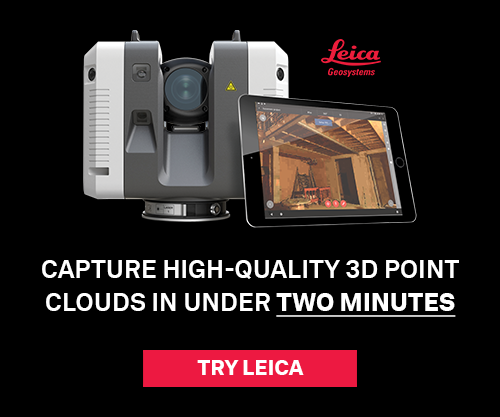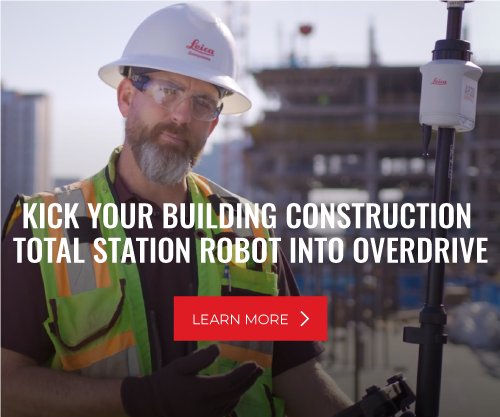AT A GLANCE
With help from Spatial Technologies, Sub-Terrain Excavating & Trucking Ltd. has:
- Increased Efficiency and Accuracy: Sub-Terrain is achieving accuracies within 5 millimeters while delivering projects up to 10% faster with GPS machine control and in-house modeling. “We can make changes on-site within 10 minutes and have the crew running the same day,” says Sub-Terrain owner Justin Brilman.
- Reduced Fuel Use and Carbon Impact on Sustainable Projects: They’ve slashed the number of passes it takes to reach grade tolerances and are spending less time on site. “Green energy is supposed to be green energy,” Justin says. “The less carbon emissions we throw into a green energy project, the better it is for everybody.”
- Improved Flexibility with Fewer Resources: They’ve eliminated the need for manual staking with multi-person crews, and refocused internal resources on building their own surface files instead of outsourcing — an investment with a high return. “Having modeling done in-house helps us get more jobs done in a year,” says Teunis Tichelaar, Sub-Terrain surveyor/project manager.
What do remote locations and sustainable infrastructure projects both have in common for excavating contractors?
Neither can afford to waste any resources.
It’s a familiar challenge for Justin Brilman, owner of Sub-Terrain Excavating & Trucking Ltd. (STX).
The Alberta-based excavating contractor often works in rural areas on a range of sustainably focused projects, including solar farms, bio-digesters, and roller-compacted concrete construction — where efficiency and precision are all imperative.
“Technology is key,” Justin says. “You can’t even bid on a job now without it.”
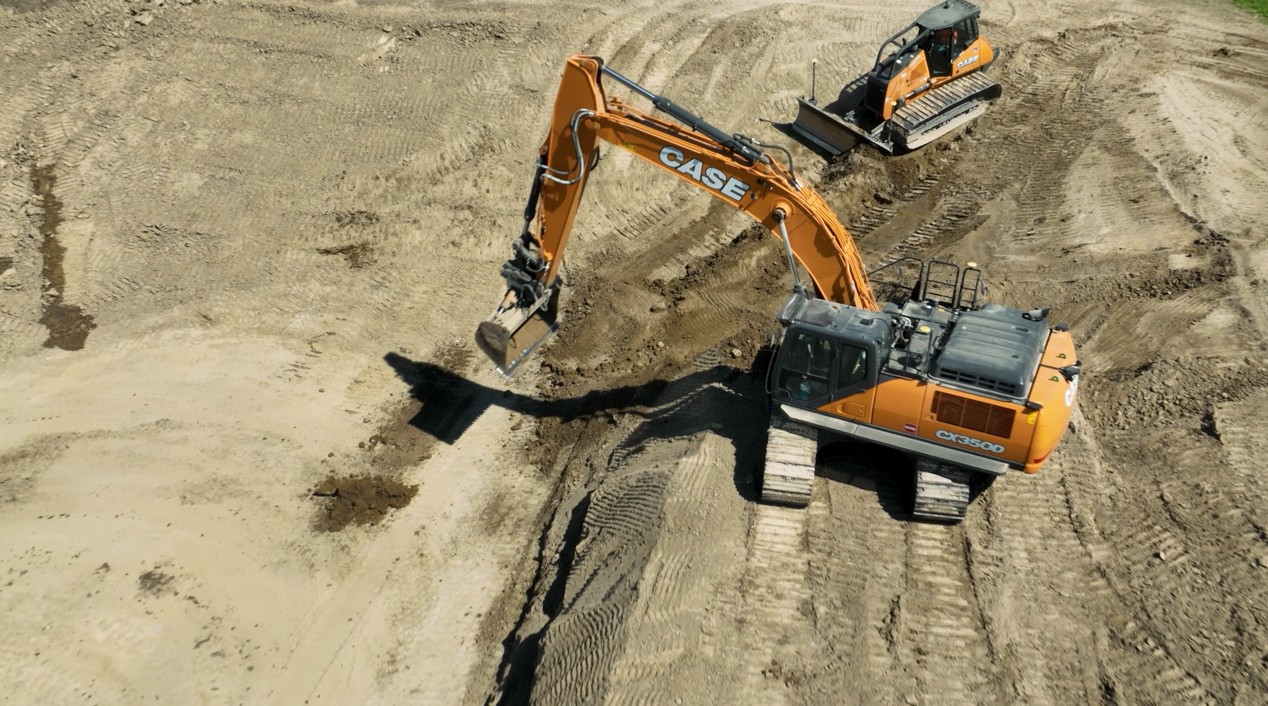
For Justin’s crew at Sub-Terrain, their technology not only needs to be easy to use, but their technology provider must also be easy to work with.
“Honestly, the first phone call I made was about Leica,” Justin says. “I’ve used all the machine control systems, but I chose Leica because they are the easiest to use.”
That led them to their current partnership with Spatial Technologies, a dealer that serves Western Alberta. Spatial Technologies has assisted them in incorporating Leica 3D machine control across their fleet and taking advantage of its ability to streamline workflows.
“It has changed the way we work on projects,” says Travis Stoperski, foreman for Sub-Terrain Excavating. “Everything goes to grade quicker, and it makes everything more efficient on our job sites.”
Making Machine Control Easy to DIY
Justin’s the kind of guy who’s always had his eye on technology — but it has to be simple.
If he can’t use it himself as the owner, it’s a no-go for introducing it to his operators and on-site crews.
Thankfully, Justin says the Leica 3D machine control interface is straightforward and the learning curve is minimal.
“Training new guys on Leica machine control is really easy,” Justin says. “Usually they spend the day in the dozer, and they’ll figure it out.”
If they need any troubleshooting beyond that, the Spatial Technologies team is readily available to provide hands-on support.
“Any spot you’re at, they can pretty much tell you the next step right off the top of their head,” says Teunis Tichelaar, surveyor/project manager for Sub-Terrain Excavating.
It helps that there is a willingness to try new things across the Sub-Terrain team, says Ryan Baumbach, Spatial Technologies technical service specialist for machine control.
“Sub-Terrain’s approach to technology is very cutting-edge,” Baumbach says. “They’re very fast to adapt to new styles of machine control.”
In fact, Sub-Terrain learned how to build their own models, eliminating waiting on third parties and allowing them to make real-time adjustments in the field.
“We do all our own surface files,” Justin says. “Once we got it figured out, we’d never go back.”
Now the Sub-Terrain team can create models in about 45 minutes, validate designs with stockpile reports, and deliver as-builts to clients.
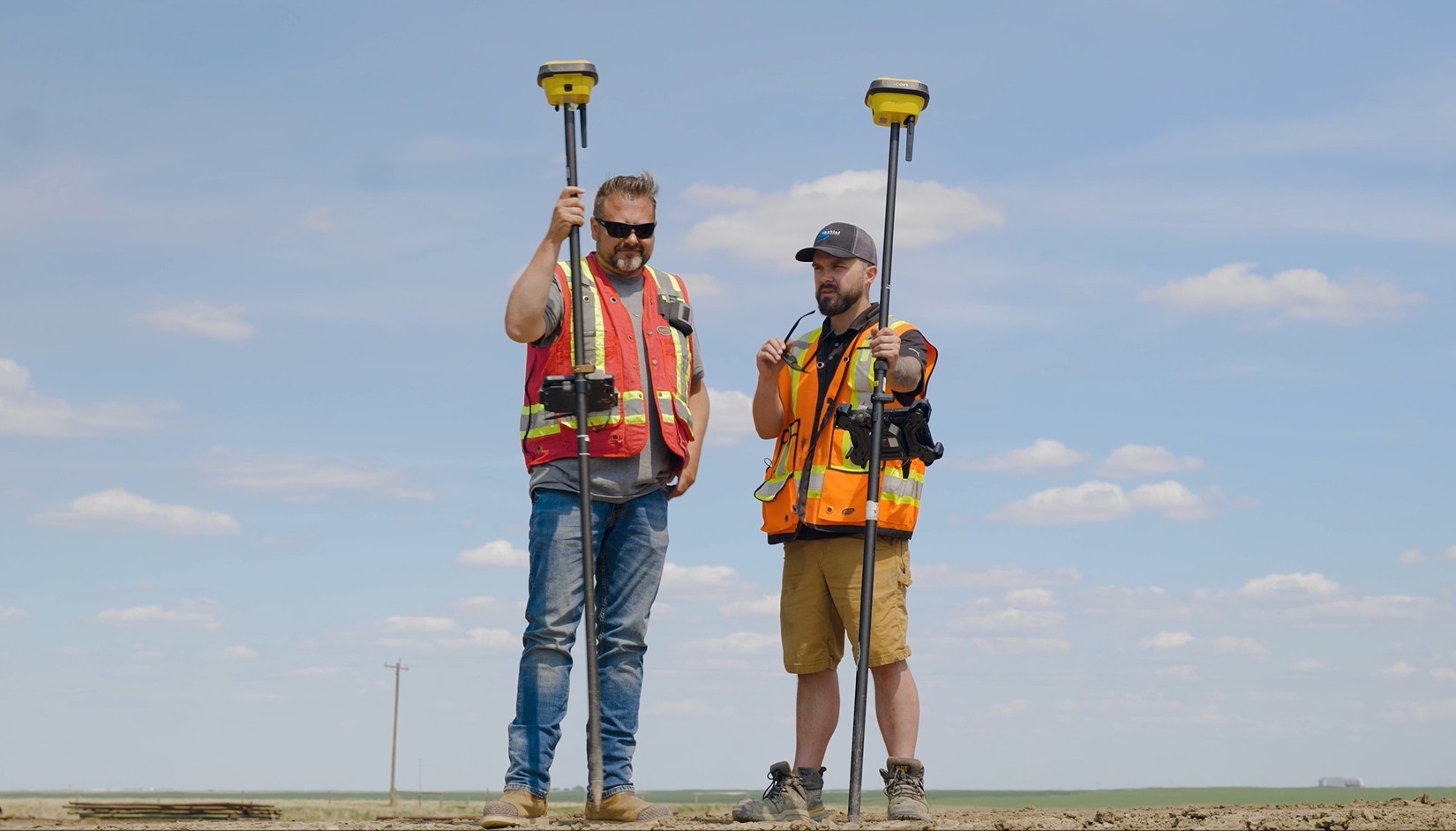
Working Smarter, Safer, and More Sustainably
It was a journey for Sub-Terrain to get where they are in leading with technology, and Justin acknowledges they first had to overcome the status quo.
For example, in 2023 they were working on a 50-megawatt solar farm, where the traditional methods of manual staking quickly became unwieldy.
“They had four surveyors pounding in stakes every day, bundle after bundle, just hammering in the dust, in the rain, in the wind,” Justin says.
The work was not only tedious, but it was also unsafe. It was hard to see the crews through the thick clouds of dust, and equipment was running all around them.
It took a superintendent from Sub-Terrain to speak up and offer to try using machine control with their dozer. Justin says there was some initial reluctance from the surveyors to hand over the file.
However, once they saw the results, any hesitations or concerns were eliminated.
“It was perfect,” Justin says. “They didn’t have to come back and do any rework.”
Sub-Terrain then expanded the use of machine control to their graders to achieve the project’s tight tolerances. This required working closely with Spatial Technologies.
“The accuracy, especially for solar farms, is very tight, so it was very important to make sure that all the machines were as accurate as they possibly could be,” Ryan says.
In the end, Sub-Terrain completed the work with fewer passes and less fuel burn while reducing costly rework — far less waste all around. It was truly a winning combination for a green energy project.
“The fact that we could use Leica machine control to get our grades perfect the first time was a huge time saver for us and the customers,” Justin says.
Remote Projects with Greater Rewards
Now, Sub-Terrain is using machine control throughout their remote work to counter resource constraints and tight tolerances.
“Adding machine control to everything has really helped,” Justin says.
“We’re getting projects done more efficiently, more accurately, thus just saving money for the customer at the end of the day. It also puts more money in our pockets.”
And the payoff for investing in machine control is only just beginning.
“The importance of machine control and construction isn’t going to go away,” Ryan Baumbach of Spatial Technologies says. “It’s just going to keep growing as time moves forward.”
To speak with a heavy construction expert who can guide you on your technology journey, contact us.




